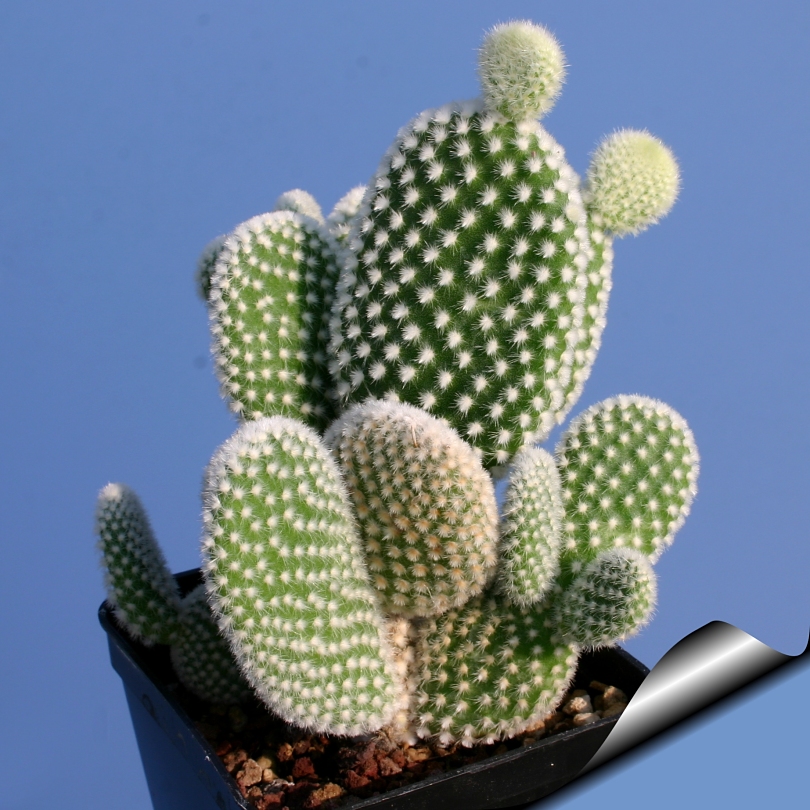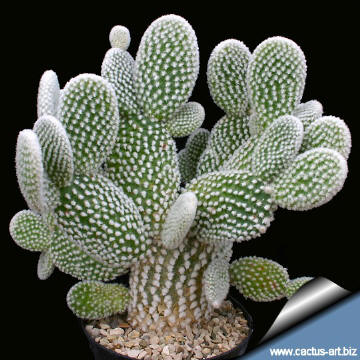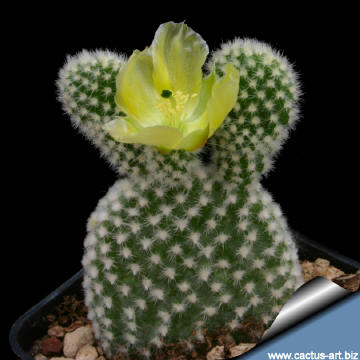-
x
Descrizione
|
Pianta cespugliosa formata da piccoli articoli privi di spine ma ricoperti da sottili glochidi simili a fini peli bianchi e lunghi fino a 2-3 mm. Ma l'apetto morbido di questa pianta non deve trarre in inganno, meglio non toccarla!
Family: Cactaceae (Cactus Family) Scientific Name: Opuntia microdasys(Lehmann) Pfeiffer Scientific name: Mexico central and northern Mexico Origin: Garden origin (Nursery produced cultivar) Conservation status: Listed in CITES appendix 2. Common Names include: Bunny Ears, Polka Dot Cactus
|
|||
|
|
Description: Freely clustering succulent with miniature pads. It forms a dense shrub, to 40-60 (occasionally more) cm high, up to1.5 m across. Note: The very closely related Opuntia rufida differs in having reddish-brown glochids; it occurs further north in northern Mexico, and into western Texas. Some botanists treat the two as a single species.
Cultivation: They are easy to culture. Require full sun to partial shade with a well-drained soil mix. The plants are watered and allowed to dry thoroughly before watering again. During the winter months, the plants enjoy a cold place where the temperature is dropped to 5/10° C, but hardy to -5° C for short periods of time if very dry. During this period water only enough to keep the pads from shrivelling.
|
||




